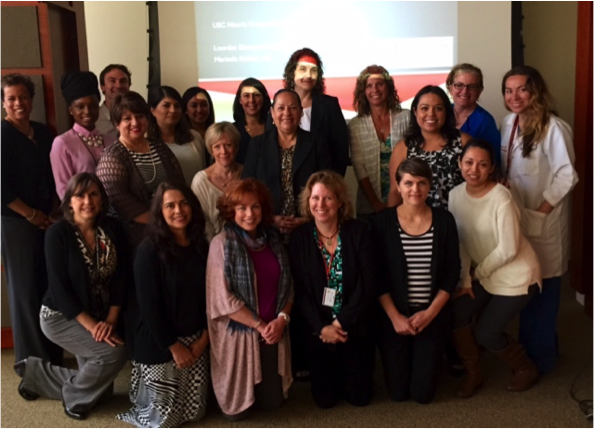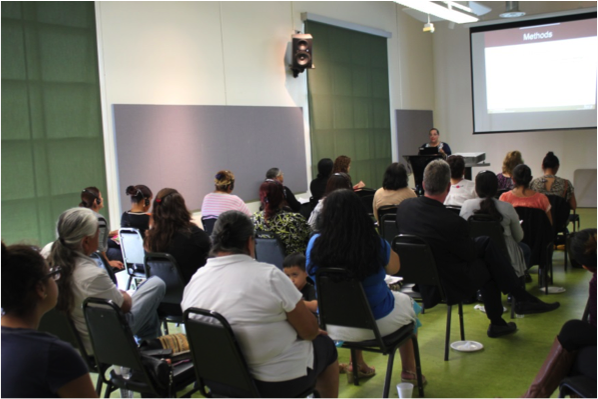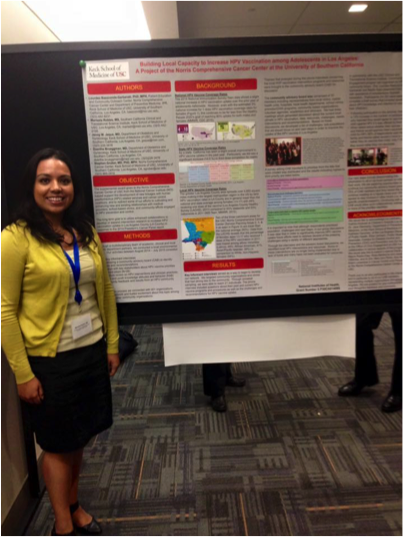Increasing Local HPV Vaccination Rates among Adolescents in Los Angeles
SC CTSI and the USC Norris Comprehensive Cancer Center bring together medical providers, school-based clinics, and others.
Vaccination against human papillomavirus (HPV) infection is one of the most effective methods for reducing risk for cervical cancer as well as other HPV related cancers in both females and males (MMWR, 3/27/15, Vol 64, No. 11). Despite the recommendations of routine HPV vaccinations for all adolescent the overall uptake remains low in the US.
In September 2014 the SC CTSI partnered with the USC Norris Comprehensive Cancer Center on a project funded by National Cancer Institute (NCI). The USC Norris Comprehensive Cancer Center was one of 18 sites who received a supplemental award. The award supported the development of existing and new collaborations with HPV vaccine related services and cancer control coalitions, and it helped redirect some of the cancer center’s efforts to cultivating and enhancing relationships with medical providers, school-based clinics, local health departments, coalitions and other community efforts engaged in HPV prevention and control. 
Through a multidisciplinary team of academic, clinical and local health department partners, we conducted a local environmental scan. Our activities between August 2014 – July 2015 consisted of:
- 21 key informant interviews
- Developing of a community advisory board (CAB) to identify needs and recommendations
- Surveys with key stakeholders about HPV vaccine priorities and next steps (N=28)
- Literature review on HPV interventions and clinician practices, parent and youth knowledge attitudes and behavior (KAB)
- Community feedback and results from an HPV community forum

Sharing HPV research with the community, Dr. Lourdes Baezconde-Garbanati
The phone interviews included questions about past and current HPV vaccine programs and procedures as well as the challenges and recommendations for HPV vaccine uptake. This information along with current local, state and national data was brought to the advisory board for further discussion. As a result, the following sets of local prioritize were developed.
Highest Priority - Complexity of patient-provider communications/provider recommendations and Lack of follow through for 2nd and 3rd dose
Second Priority – Parental attitudes about the vaccine as it relates to youth sexual behavior
Third Priority – Limited public understanding of vaccine benefits- vaccine associated with girls and
Highest Priority – Clinicians
Second Priority – Parents
Third Priority - Adolescent girls (ages 11-18) and Adolescent boys (ages 11-18)
Highest & Second Priority – Training for clinicians on how to better communicate with families
Third Priority - Piloting and evaluating an education based intervention that would increase HPV vaccine knowledge and Train promotores/CHWs

Poster presentation at the University of Texas MD Anderson Cancer Center
We presented at the Annual Public Health Association conference in Chicago on November 1, 2015 as well as at the Increasing HPV Vaccination in the US: A Collaboration of NCI-funded Cancer Centers 2015 at the University of Texas MD Anderson Cancer Center on November 5, 2015. We are exploring opportunities to continue our CAB which would allow us to collaboratively address one or more of the priorities identified.



